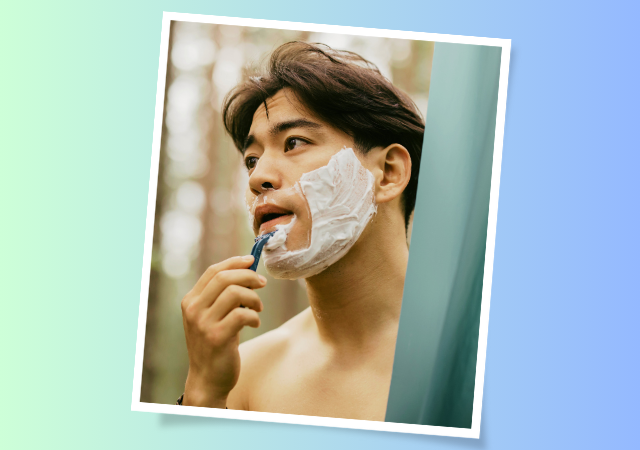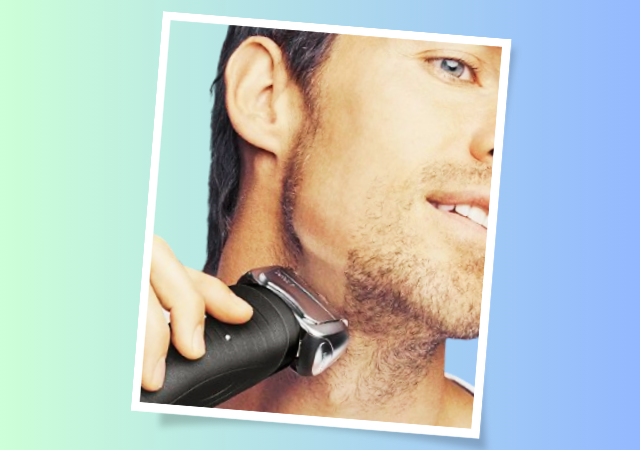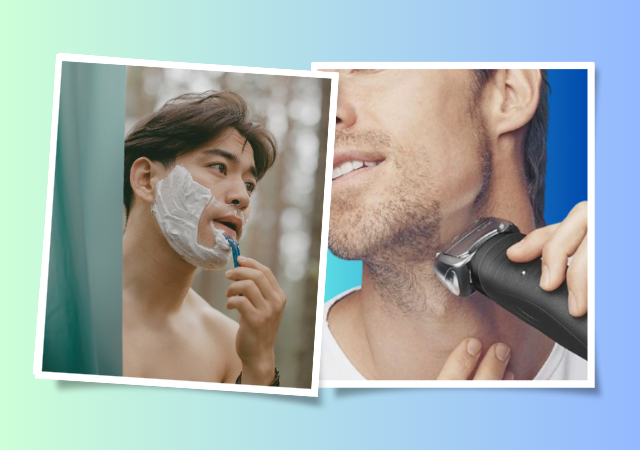Traditional Wet-Shaving vs. Electric Razors: A Comprehensive Comparison
Introduction
Embarking on the quest for a perfectly groomed appearance, the choice between traditional wet-shaving and electric razors remains a pivotal decision in the grooming routine. In this comprehensive comparison, we dissect the distinctive qualities of these two approaches, aiming to guide individuals towards the shaving method that aligns seamlessly with their preferences. Traditional wet-shaving, rooted in time-honored tools and rituals, promises a meticulous, sensory experience, while electric razors boast modern efficiency. As we navigate the realms of shaving performance, time efficiency, costs, user experience, and maintenance, readers will gain valuable insights, aiding them in choosing the shaving path that best suits their lifestyle and preferences. Join us on this exploration of the shaving world’s classic traditions and cutting-edge innovations to uncover the ideal grooming ritual for you.
Traditional Wet-Shaving vs. Electric Razors: A Comprehensive Comparison
I. Traditional Wet-Shaving: A Glimpse into Time-Honored Techniques

Overview of Traditional Wet-Shaving Methods
Traditional wet-shaving encompasses various methods, with two of the most prominent being straight razors and safety razors. The use of a shaving brush and high-quality shaving creams or soaps is also integral to this method. Straight razors, often associated with barbershop precision, require a steady hand and skillful technique. Safety razors, introduced as a safer alternative, feature replaceable blades that provide a close shave while minimizing the risk of nicks and cuts.
Advantages of Traditional Wet-Shaving
- Closer Shave: One of the primary attractions of traditional wet-shaving is the exceptionally close shave it provides. The combination of a sharp blade and proper technique allows for a smooth, clean result that many enthusiasts find unmatched.
- Ritualistic Experience: Beyond its functional aspects, traditional wet-shaving is a ritual, a moment to indulge in self-care. The meticulous preparation, the sound of the razor gliding across the skin, and the application of lather create a sensory experience that many find therapeutic.
- Cost-Effectiveness in the Long Run: While the initial investment in quality tools and products may seem steep, traditional wet-shaving can be cost-effective in the long run. Replacement blades for safety razors are generally more affordable than continuously purchasing disposable cartridges for other types of razors.
Disadvantages of Traditional Wet-Shaving
- Learning Curve: Mastering the art of traditional wet-shaving takes time and practice. Novices may find themselves dealing with nicks and cuts until they become adept at handling the tools and refining their technique.
- Time-Consuming: Traditional wet-shaving is not a hurried affair. It demands time for preparation, the actual shaving process, and post-shave rituals. Individuals with busy schedules may find it challenging to allocate sufficient time for this method.
- Maintenance of Tools: Straight razors and safety razors require regular maintenance. Blades need to be sharpened or replaced, and the overall condition of the tools must be carefully monitored to ensure an optimal shaving experience.
II. Electric Razors: The Modern Solution for Busy Lifestyles

Overview of Electric Razors
Electric razors have become synonymous with convenience, featuring two main types: foil razors and rotary razors. Foil razors utilize oscillating blades beneath a thin, perforated foil, while rotary razors have circular blades that pivot as they move across the skin.
Advantages of Electric Razors
- Convenient and Quick: The hallmark of electric razors is their convenience. They allow for a quick shave without the need for water, shaving cream, or a meticulous pre-shave routine. This makes them ideal for individuals with busy lifestyles.
- Minimal Learning Curve: Unlike traditional wet-shaving, using an electric razor requires minimal skill. Individuals can achieve a decent shave without the need for intricate techniques, making it a user-friendly option for those who value simplicity.
- Suitable for Various Hair Types: Electric razors are designed to handle different hair types and lengths. They can efficiently cut through coarse or fine hair, making them versatile tools for a broad range of users.
Disadvantages of Electric Razors
- Initial Cost: High-quality electric razors often come with a significant upfront cost. While the initial investment may deter some users, it is crucial to consider the long-term savings compared to ongoing expenses with other shaving methods.
- Less Close Shave: Despite advancements in technology, electric razors typically provide a shave that is not as close as traditional wet-shaving methods. This may be a drawback for individuals who prioritize an impeccably smooth finish.
- Battery Dependency and Maintenance: Electric razors rely on batteries or charging, introducing an element of dependency. If the battery runs out mid-shave, it can be an inconvenience. Additionally, regular cleaning and maintenance are essential to ensure optimal performance.
III. Comparison Factors: Navigating the Shaving Landscape

Shaving Performance
When evaluating shaving performance, the closeness of the shave and the potential for skin irritation are crucial considerations. Traditional wet-shaving excels in providing an exceptionally close shave, but it demands precision and may lead to irritation if not executed carefully. Electric razors, while quick and efficient, may not achieve the same level of closeness and could be gentler on sensitive skin.
Time Efficiency
In our fast-paced world, time is a precious commodity. Traditional wet-shaving, with its elaborate preparation and meticulous process, demands a significant time investment. On the contrary, electric razors offer a quick and hassle-free solution, making them ideal for individuals with hectic schedules who need a swift grooming routine.
Cost Considerations
The cost aspect involves both the initial investment and long-term expenses. Traditional wet-shaving requires an initial investment in quality razors, brushes, and creams. However, the long-term cost of replacement blades can be more economical. Electric razors, on the other hand, may have a higher upfront cost, but ongoing expenses are generally lower.
User Experience
User experience encompasses the sensory aspects of shaving, including the feel of the tools on the skin and any associated rituals. Traditional wet-shaving provides a sensory-rich experience with the application of lather and the sound of the razor gliding across the skin. Electric razors offer a more straightforward, no-frills experience that may appeal to individuals seeking efficiency over tradition.
Maintenance
Maintaining the tools is a crucial aspect of the shaving routine. Traditional wet-shaving tools, such as straight razors and safety razors, require regular sharpening and careful upkeep. Electric razors necessitate routine cleaning and occasional maintenance to ensure optimal performance. Users must consider their willingness to invest time in maintaining their chosen shaving tools.
IV. Personal Preferences and Considerations
Several individual factors can influence the choice between traditional wet-shaving and electric razors:
- Skin Type: Those with sensitive skin may prefer the gentler approach of electric razors, while individuals who can tolerate closer shaves may opt for traditional methods.
- Hair Type and Growth Patterns: The coarseness of hair and the direction of growth play a role in the effectiveness of each method. Understanding one’s hair characteristics can guide the choice between traditional and electric shaving.
- Time Availability: Individuals with limited time may lean towards electric razors for their quick and efficient nature, while those who view shaving as a ritual may find solace in the time-consuming elegance of traditional wet-shaving.
- Budget Constraints: The initial investment and long-term costs associated with each method may impact the decision, particularly for those on a budget.
Conclusion (Traditional Wet-Shaving vs. Electric Razors: A Comprehensive Comparison)
The choice between traditional wet-shaving and electric razors boils down to personal preferences, priorities, and lifestyle. Traditional wet-shaving offers a timeless, ritualistic experience with unparalleled closeness, but it demands time, skill, and ongoing maintenance. Electric razors provide convenience, speed, and simplicity, catering to individuals with hectic schedules or a preference for a straightforward grooming routine.
Ultimately, the ideal shaving ritual is a subjective endeavor. Some may revel in the artistry of traditional wet-shaving, savoring the sensory experience and relishing in the timeless rituals. Others may opt for the practicality of electric razors, valuing efficiency and the ability to achieve a decent shave without the fuss.
As grooming is a deeply personal aspect of self-care, individuals are encouraged to experiment with both methods to discover what resonates best with their preferences. Whether it’s the meditative artistry of traditional wet-shaving or the swift efficiency of electric razors, the journey to a well-groomed appearance is a unique and individual path. Choose the method that aligns with your values, time constraints, and the overall experience you seek in the daily ritual of shaving.

My name is Rohit Vagh and I’m a content writer specializing in fashion and lifestyle. I have three years of experience in this field and have written various articles. My writing style is creative and engaging, and I strive to create content that resonates with my readers. I have a deep passion for fashion and am constantly researching the latest trends and styles to make sure my readers are up to date. I’m excited to continue my career in blogging, and I’m always looking for new opportunities in the fashion and lifestyle space.





